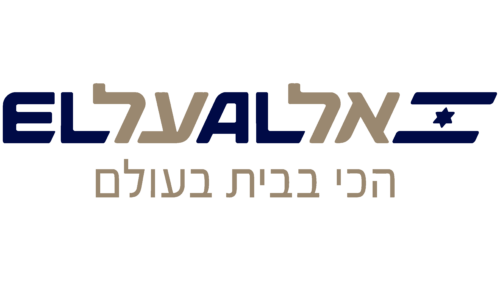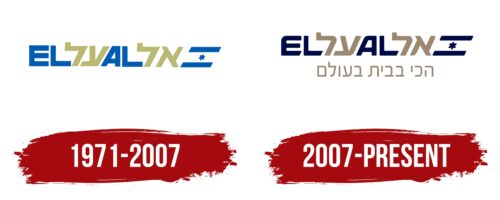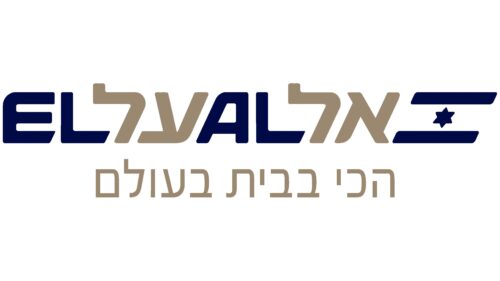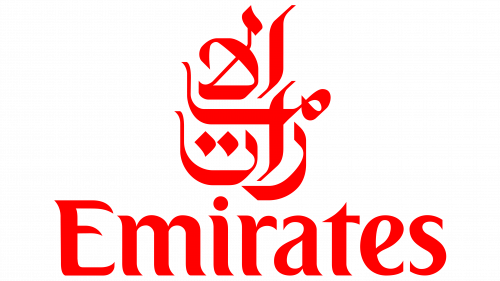The El Al logo symbolizes Israel’s enduring spirit and its national airline’s connections across the globe. The design captures Israel’s rich history and cultural heritage, conveying themes of resilience and progress. The emblem illustrates the airline’s role in safely and reliably transporting passengers to and from Israel, a country often seen as a bridge between continents and cultures. The company is a crucial tourism and international diplomacy link through its operations, acting as a flying ambassador for Israeli innovation and hospitality.
El Al: Brand overview
The history of El Al began in November 1948, shortly after the State of Israel declared its independence. Initially, the airline was established as part of the Israeli Air Force to transport immigrants from Europe, Yemen, and Iraq to the new country. The name “El Al” means “to the sky” in Hebrew. On September 15, 1948, El Al made its first international flight from Lod Airport (now Ben Gurion Airport) to Geneva using a Douglas DC-4 aircraft. Over the following months, regular flights to Paris, Rome, and Johannesburg were introduced. During this time, the airline’s fleet consisted of several second-hand American aircraft, including DC-4s and Lockheed Constellations.
In 1950, the company transitioned into a government-owned company, fully owned by the State of Israel, allowing investments to enhance and update the fleet. Throughout the 1950s, the airline expanded its route network, adding flights to London, Vienna, Istanbul, Tehran, and New York.
1955, the company made history by being the first airline to complete a nonstop transatlantic flight from Tel Aviv to New York on a Lockheed Constellation. This flight, known as “Operation Magic Carpet,” aimed to transport Jewish refugees from Yemen to Israel. During the 1960s, the company continued to grow its route network and upgrade its fleet, introducing flights to Johannesburg, Nairobi, Bangkok, and Hong Kong.
In 1961, the airline acquired its first jet aircraft, a Boeing 707, which significantly reduced flight times on long-haul routes. By the late 1960s, the fleet included wide-body Boeing 747s, increasing passenger capacity on key routes. However, the 1960s and 1970s were challenging periods for the company due to terrorist attacks and hijackings by Palestinian extremists. In response, the airline implemented stringent aviation security measures, including armed guards onboard, thorough passenger screenings, and multi-layered baggage checks, which later became standard practices for airlines globally.
In 1970, the company faced a hijacking incident known as “Flight 219,” where Palestinian terrorists attempted to take control of a Boeing 707 en route from Tel Aviv to London. Thanks to the pilots’ and security guards’ bravery and professionalism, the airline regained control of the aircraft, making this incident legendary in aviation security history.
In the 1980s and 1990s, the company continued to expand its route network and update its fleet, adding destinations in North America, Europe, and Asia. The fleet was modernized with Boeing 737s, 757s, 767s, and 777s. Following the dissolution of the Soviet Union in 1991, the airline became one of the first foreign airlines to operate regular flights from Tel Aviv to Moscow and other cities in the former Soviet Union with significant Jewish populations, aiding in the repatriation of Jews to Israel.
In the 2000s, the company faced financial challenges due to increased competition from foreign airlines and low-cost carriers. To address this, the airline was partially privatized in 2003, with the government’s ownership reduced to 36% and a controlling stake sold to Israeli investors. This enabled the company to attract more capital and restructure its operations.
Following 2010, the airline continued to grow by focusing on renewing its fleet, expanding its route network, and enhancing service quality. Here are key events and facts from the airline’s history between 2010 and 2019:
In 2012, the company made a significant announcement about ordering 15 new Boeing 787 Dreamliners. These modern planes replaced the older Boeing 747 and 767 aircraft on long-haul routes, improving fuel efficiency and passenger comfort. The first Dreamliner joined the fleet in 2017.
In 2013, the airline celebrated its 65th anniversary. At that time, the airline served more than 50 destinations worldwide with a fleet of about 40 aircraft. That same year, the company introduced a new service concept on long-haul flights, which included better catering, new business class seats, and advanced in-flight entertainment systems.
In 2015, the company initiated regular flights from Tel Aviv to Boston, strengthening its presence in the North American market. The airline upgraded its hub at Ben Gurion Airport by opening a new lounge for business class passengers and loyalty program members.
In 2016, the company announced the launch of a new low-cost subsidiary called UP. This move aimed at improving the airline’s position in the competitive European market by offering more affordable fares and simplified service on popular tourist routes. The first UP flights took off in late 2016.
From 2017 to 2018, the airline expanded its route network by adding new destinations such as Miami, San Francisco, Las Vegas, Nice (France), and Dublin (Ireland), strengthening its presence in North America and Europe.
In 2018, the company achieved an important milestone in gender equality by operating its first flight with an all-female crew, showcasing its dedication to equal opportunities and diversity in the workplace.
2019, the airline unveiled a new development strategy to enhance efficiency and competitiveness. This strategy included optimizing the route network, updating the fleet, digitizing services, and forming partnerships with other airlines. As part of this strategy, the airline decided to gradually retire its remaining Boeing 747 aircraft and replace them with more advanced Boeing 787 Dreamliners.
In the same year, the company continued to expand its route network by introducing new flights to Chicago, Orlando, Tokyo (making it the first Israeli carrier to operate direct flights to Japan), Manchester (UK), and Nice (France). Additionally, the airline launched an updated mobile app in 2019, allowing passengers to book tickets, check in for flights, manage their bookings, and receive personalized offers. The frequent flyer program, Matmid, was enhanced to offer members a wider range of benefits and rewards.
Meaning and History
What is El Al?
It is Israel’s national airline, based in Tel Aviv. It operates an extensive network of domestic and international flights connecting Israel to destinations in Europe, North America, Africa, and Asia. It is recognized as one of the most reliable airlines in the world. The airline offers various classes of service, including economy, premium economy, business class, and first class. It is important in promoting tourism and facilitating travel to and from Israel.
1971 – 2007
From 1971 to 2007, El Al, the Israeli airline, used an emblem representing its status as the national carrier, highlighting its international significance and cultural identity. The central element of the logo was the intertwining of the company name in English, “El Al,” and in Hebrew (אל על). This design technique showcased the brand’s bilingualism and symbolized the continual air connection between Israel and the rest of the world. It emphasized the company’s mission to serve as a bridge between nations and cultures.
The name “El Al,” which translates to “Skyward,” directly reflected the theme of flight, the aspiration to transcend boundaries, and the achievement of new heights. The logo’s color scheme was rich in meaning: the blue hue symbolized professionalism, reliability, and safety, which are critical in the aviation industry, while the gold color represented the luxury and richness that passengers could enjoy aboard El Al’s liners.
To the right of the company name was the flag of Israel, a significant element that underscored the airline’s country of origin. This feature strengthened El Al’s national identity and highlighted its role in the national economy and culture.
2007 – today
The El Al logo combines English and Hebrew text in a single line. The English word “EL” is followed by its Hebrew translation, then “AL.” The Israeli flag is at the end of the line, featuring blue and white stripes with a six-pointed star in the center. This design, created by Dan Reisinger in 1971, now includes a second layer with additional Hebrew lettering in dark gold. The dark blue elements match the colors of the Israeli flag.
This bilingual logo shows El Al’s connection to international and Israeli audiences. The Israeli flag highlights the airline’s national identity. The dark gold Hebrew letters add a touch of sophistication, suggesting high-quality service. The dark blue elements provide a sense of stability and trust.
The bilingual text’s layout emphasizes the airline’s global reach and local roots. The dark gold letters add elegance, while the blue elements ensure a cohesive look. Together, these elements create a sophisticated brand image that reflects El Al’s heritage and commitment to quality.






